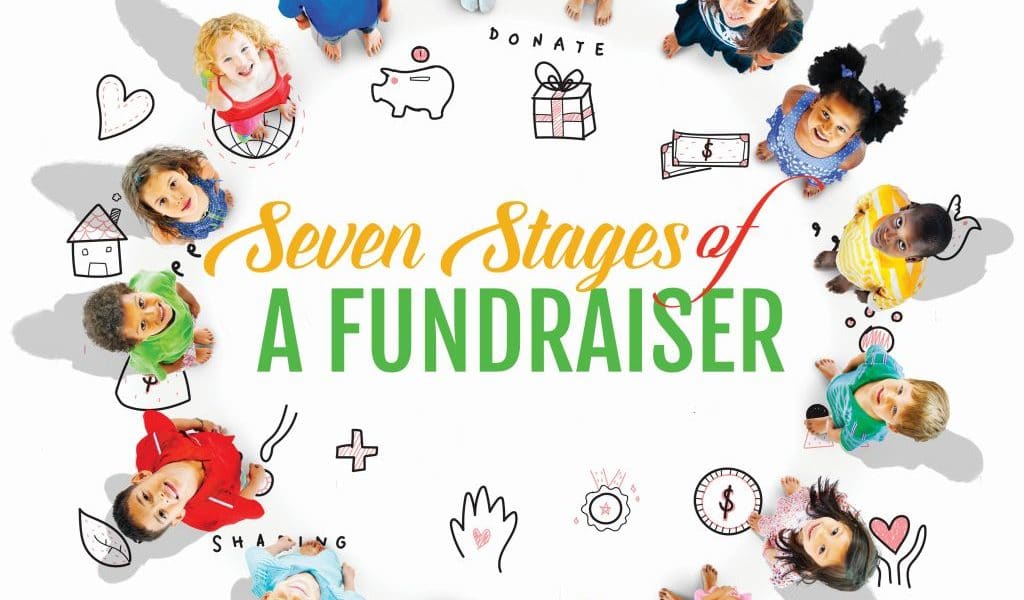So, you’re set on having a fundraiser, eh? Before you jump in headfirst, check out the steps we’ve mapped out for you. If you take time to consider and work on each one, the fundraising process will go a lot smoother.
You can’t go off to battle without a little training first, right? Okay, so maybe this isn’t quite as serious as a battle…but we take fundraising pretty seriously, so we’re going to give you the need-to-knows.
Step 1: Selection
Before you can move forward with anything else, you have to choose what type of fundraiser you’re going to take part in. Throughout the selection process, always be considering your group, their talents and skills, and the group’s mission.
The fundraiser you choose needs to align with those things in order to be successful. A group of leaders can make the selection decision, or you can bring a few options in front of the whole group and vote.
Either way, make sure the selection isn’t made on a whim. Take time to think about what fundraiser will work best for your group and provide the most success.
Fundraising options include:
- Catalog and order form sales
- Direct sales from inventory of bulk purchased items
- Online product sales
- Raffle
- Auction
- Chore/service
- Event
- Donation/collection
- Custom product fundraising
Often, several of these are combined in the same fundraiser.
Step 2: Goal-Setting
The fundraiser is chosen! Things are about to get really exciting, but you still have to set goals first. We know, we know, goal-setting is annoying and takes time that you don’t have. But, you just gotta do it.
Obviously, your main goal is to have a successful fundraiser – but what does success mean for your group? Without clearly defined goals, your group members will be less motivated and you won’t have any way to measure your results in the end.
Set long-term goals and short-term goals that seem more attainable. This will help make the process less overwhelming. Create a timeline for your goals as well. You could focus on selling (each group member needs to sell this much _____ by this date, _____) or outreach (each group member needs to pitch to _____ people by this date, _____) It might be helpful to write these goals down and map them out on a calendar or timeline to post on the wall at your group’s meeting place as a reminder.
Along with goals, create KPIs (Key Performance Indicators). This is a just a fancy way of saying, “Have a way to measure your progress.” For number-related goals, like the ones listed above, KPIs are easy. Members can count the money they’ve raised or the people they’ve contacted up to that specific date to show their progress.
Your group might have goals that aren’t so cut-and-dry. Let’s say you want to raise awareness of your group and their cause throughout the fundraising process. How do you go about measuring that?
That’s where KPIs come in. In order to see if you’ve made progress toward raising awareness, you could create the KPI of increased followers and engagement on social media. You could also compare your current fundraiser to one you may have done in the past to see if more people got involved. There’s also the option of sending out a survey to the community and asking them questions about your group or organization.
For every goal, you should be coming up with KPIs to be checked frequently throughout the fundraising process. KPIs will help you stay on track to reach your goals.
Alongside your goal timeline, make a fundraising timeline, including all the steps you’ll need to take before, during and after the fundraiser and when those need to be completed to help keep you on track. Create a budget to cover start-up expenses if you have any.
Step 3: Promotion
Even after goal-setting and planning, there’s one more step before you can actually start your fundraiser. And it’s a very important step, so don’t try to skip it! Without promotion, your fundraiser will struggle to pick up traction.
Some options include advertising with a local newspaper, radio station, or TV station, sending press releases to local media outlets, creating posters, handing out flyers, putting a notice in a city newsletter, sharing content on your social media platforms, sending out mail or email marketing to past customers, promoting your fundraiser on your website, hosting a mini-event to generate excitement for the fundraiser, and announcing the fundraiser at local events.
Using a few of these methods of promotion will greatly increase the success of your fundraiser. Plan to start two to three weeks before a traditional sales fundraiser and four to five weeks before an event fundraiser. Continue promoting throughout the fundraiser. This will give your community some time to get some word-of-mouth going about your fundraiser.
Step 4: Execution
Let the games begin! If you’ve taken care of steps 1-3, then it’s time to let your group loose to fundraise their little hearts out or host your big event. We know, it’s scary to let them out of the nest, but if you’ve planned well and talked about your goals, your group members should be on the same page and ready to execute a successful fundraiser.
Your leader should be checking up on group members periodically to make sure they’re staying on their timeline and reaching their goals by monitoring KPIs. Regular group meetings are a great time to check in, but the group leader should also do this outside of meetings.
Step 5: Ordering
At this time, your fundraiser isn’t over, but the community outreach component has come to an end. Gather your troops and see what they’ve come up with. For most traditional fundraisers, your group members will have order forms that people have filled out to purchase products. Your group now has to work with your supplier to order these products for your customers.
Some fundraising programs offer several ordering options, like phone, mail, fax, and web. Find out what options your fundraising program offers and pick the one that’s most convenient for you.
Step 6: Distribution
You’ve received your product orders and now it’s time to distribute them to your customers. Plan a time when group members can meet to pick up products and deliver them.
If products are too large or your group cannot handle distribution on their own, let customers know when and where they can pick up their products. If transactions didn’t take place at the time of ordering, make sure group members take care of this during the distribution process.
Step 7: Summary of Profits, Notes for Next Time
You did it! Your fundraiser is complete, but the process doesn’t end just yet. This is the really fun part: checking out your profits and rewarding your group! Add up your profits and share this number with the rest of the group. Have a meeting to go over how things went and whether or not your goals were reached. Have someone take notes on these things so you have them present when you begin your next fundraiser.
Take this time to collect any contact information group members may have gotten from their customers. Emails and addresses can be used to promote future fundraisers to past customers.
This info is also important for sharing your gratitude. Send thank-you notes to these customers and anyone else who helped out with your fundraiser.
Have a party for your group and reward your top fundraisers with awards or gifts. It may take a little of your fundraising profits to do this, but it’s totally worth it. If your group members feel appreciated for their hard work, they’ll be willing to do it again.
Seven easy steps. That’s not so bad, right?
If your group spends time on each of these steps and uses the tips provided, your fundraiser is sure to be a success and yield the results you’re looking for!
Learn more about Rada Cutlery’s Fundraising options – Online, Catalog or a combination of both at www.RadaCutlery.com/fundraising.






